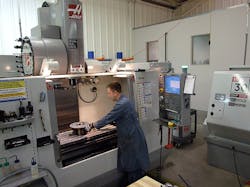Small, Medium Enterprises Optimistic About Economy
The future is looking good to small and medium-sized enterprises (SMEs), both in the U.S. and globally, according to the American Express Global SME Pulse report.
SMEs are optimistic about the economy and confident about their future business performance.The new survey of senior executives and decision makers from SMEs across 15 countries reveals these businesses in the U.S. are even more optimistic about the global economy than their foreign counterparts. More than half of U.S. executives (54%, vs. 39% overall) are positive about the global economic outlook over the next 12 months. When asked to consider the local economic environment, they are even more upbeat, as nearly six in ten are positive (59% vs. 45% overall).
Executives are also confident in their ability to deliver increased revenues and profitability. More than two thirds of the U.S. SMEs surveyed (69%, vs. 58% overall) expect significant revenue growth of at least 4% over the next 12 months.
Forty two percent anticipate revenue growth of at least 8% over the same period, double that of SMEs worldwide (21%).
In terms of profitability, U.S. SMEs are also upbeat, with 35% forecasting a net profit of at least 8% per year over the next three years. U.S.
SMEs say their most important strategy to grow domestic revenue is more effective marketing and sales to domestic customers (48%), followed closely by understanding changing customer demands (46%).
“Small and medium-sized enterprises have put strategies in place to grow product and service innovations, quickly respond to changing business demands and develop and retain skills and talent to help them thrive,” said Brendan Walsh, executive vice president, Global Commercial Payments, American Express.
While SMEs are optimistic about the economy and their own business, they also recognize areas for concern.
Areas of concern include:
-Economic uncertainly is greatest external threat (47%)
-Political uncertainty (31%)
-Changes to domestic policies, laws or regulations (24%)
SMEs take on new strategies to enhance innovation
U.S. SMEs also find themselves addressing challenges that will have a longer term impact on their businesses. Nearly three quarters (73%) identify developing and implementing innovations as the challenge they will work hardest to address over the next three years. To improve innovation, companies identify different approaches they are currently taking or will use in the future, including:
- Encouraging all staff to contribute ideas (68%)
- Incorporating customer feedback into the research and development process (67%)
- Encouraging an innovative culture by accepting challenge and risk (66%)
- Employing talented innovators (65%)
- Creating innovation taskforces within the organization (62%)
- Allocating staff time for idea generation (62%)
- Investing more in R&D (62%)
SMEs are focusing on expansion and sales growth
Despite uncertainty, SMEs are focusing on growth and expansion strategies to improve their financial performance. More than one third of U.S. SMEs say growing their share within existing markets and expansion into new domestic markets will most contribute to their businesses’ financial performance over the next three years (each, 36%). Fewer believe expanding into new international markets will be a contributor to financial performance (27%).
As they look to expand, many SMEs encounter difficulty when trying to access the financing required for growth. Six in ten businesses (60%) say they face difficulty accessing the financing they need to grow their business. More than three quarters (78%) are satisfied to some degree with the current financing options available to their business.
Today, most U.S. SMEs rely on bank loans (58%) and existing working capital (50%) to fund their investments. Over the next year, SMEs plan to take advantage of a diverse set of funding options. Bank loans and existing working capital will remain important, but many SMEs will also be looking to non-bank sources of finance such as private equity (36%), crowdsourcing (35%), existing working capital and flexible access to funds such as credit cards (each, 33%).
